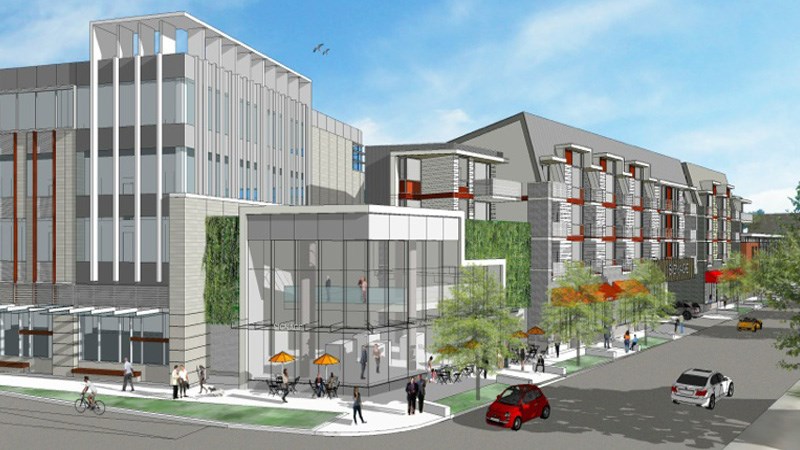Victoria’s once tame – and government reliant – office sector has roared to life, posting the lowest vacancy rate since 2009 and record private investments cresting $110 million in 2016.
Colliers International’s fourth-quarter 2016 Victoria office market report said the vacancy rate fell to 7.81 per cent at the end of 2016, compared with 9.54 per cent at the same time in 2015.
Downtown, nearly all of the new Class A space is already leased.
Vacancy is expected to continue to decrease throughout 2017, as no new supply is expected to reach the market until late this year or early in 2018.
The first of the new Class A space, the 125,000-square-foot Capital Park phase one that completes this September, is already pre-leased to the provincial government. Capital Park’s second phase of 130,000 square feet doesn’t open until 2019.
The second big project coming is 1515 Douglas Street, which will phase in 270,000 square feet during 2018.
The new supply will have minimal effect on vacancy rates this year.
“The staggered timing of the supply over two years will not drive the vacancy up by a similar amount,” the report said. “We will also undoubtedly see higher vacancies in Class B and C buildings as tenants take advantage of the new supply of Class A office space, but the overall impact will not be dramatic.
“With the current downtown Class A vacancy at 1.07 per cent, it is clear there is pent-up demand for this new product.”
Class B and C buildings account for nearly 89 per cent of the total office space in Victoria, but landlords are facing a challenge: either improve the buildings or face even higher vacancies.
Tenants – increasingly high-tech firms – are “less tolerant of the aging office stock that has not been upgraded or properly maintained,” Colliers notes.
The downtown Class B vacancy rate is 5.4 per cent, while it is 13 per cent for Class C buildings.
Of the regional total of nearly 200,000 square feet of office space that was taken up last year, 73,454 square feet was downtown and 123,224 square feet was in suburban areas.
There were 21 sales during 2016 worth a total of $110.7 million, with 17 of those transactions involving property downtown.
Retail
Victoria’s retail sector is also performing well, which Colliers credits to strong tourism numbers, an increase in population and the growth in high-tech sector jobs.
The retail street-front vacancy rate dropped more than 3 per cent to 5.45 per cent by the end of 2016. That’s the lowest rate since 2010.
“Of significance, Government Street experienced positive leasing activity and a number of long-term retail vacancies were leased, including the Promise Block and the Royal Trust Building,” Colliers said. “There is very little vacancy on Government Street now and rates are anticipated to strengthen in 2017.”
Shopping centres had a positive year with the vacancy rate dropping to 4.43 per cent at the end of 2016, compared with 5.24 per cent in 2015.
Colliers said that drop is due to empty former Target stores finding new tenants (Canadian Tire at Hillside Centre and Lowe’s at Tillicum Centre) and the new supply in developments such as Eagle Creek in View Royal being taken up by new retailers
“There are new shopping centres and redevelopments either proposed or underway,” the report said. It cited Mayfair Shopping Centre, which has started its 100,000-square-foot expansion; Sidney Crossing Shopping Centre being approved at the entrance to Sidney; Belmont Shopping Centre in Langford offering 200,000 square feet of retail space with the first phase scheduled to be complete by July 2018; and Colwood Corners expecting its first phase of 120,000 square feet to be completed in 2018.
“We expect a general strengthening of rates along with decreasing vacancies in 2017,” the report said.
Multi-family
Low residential rental vacancy rates could see a slight increase in 2017 with new purpose-built rental units hitting the market this year around the region. Vacancy rates in the fourth quarter were 0.5 per cent, a slight drop from the same time in 2015.
Colliers said the low vacancy rate has been driven in part by a younger demographic moving to the Capital Region.
More than 1,300 new residential units will be added downtown in the next 12 to 24 months.
“We should see a minor uptick in vacancy rates as the market digests these new additions to inventory,” Colliers noted.



